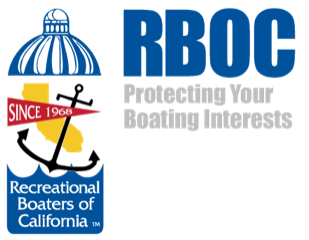ALEXANDRIA, VA, May 16, 2017 –“Big Ethanol” is at it again. In a new advertising campaign timed with the start of boating season, the Renewable Fuels Association (RFA), the leading trade association for America’s ethanol industry, continues to spread mistruths in its support of the Renewable Fuel Standard (RFS), a 2005 law that mandates the blending of biofuels such as corn-ethanol into our gasoline. The nation’s largest recreational boating advocacy, services and safety group Boat Owners Association of The United States (BoatUS) clarifies the ad campaign’s spin with hard truths.
SPIN: “E10 is the fuel of choice for many boaters because of its high performance and lower emissions.”
HARD TRUTH: E10 is simply the most common fuel sold in America today, but it is not recreational boaters’ preferred choice of fuel. According to those surveyed by BoatUS, 91 percent prefer non-ethanol fuel for their boats. Unfortunately, non-ethanol gas is facing more uncertainty as the government mandate to increase the volume of ethanol in the nation’s fuel supply may actually reduce the availability of ethanol-free gas. While ethanol boosts a fuel’s octane rating, the US Department of Energy acknowledges that ethanol contains less energy than gasoline and “result(s) in lower fuel economy.”
SPIN: E10 is the “preferred choice by professionals” with supporting quotes by the National Boat Racing Association and Crappie Masters.
HARD TRUTH: Both organizations are sponsored by the RFA.
SPIN: “Tip #1: Ensure a tight seal, if water is found, dry the tank before refueling.”
HARD TRUTH: This impractical and potentially very unsafe “tip” asks boaters with built-in fuel tanks to do the impossible. Removing and disposing of phase-separated fuel – a result of too much water in moisture-attracting ethanol fuels – can only be done safely by professionals and is expensive. Even for those with portable fuel tanks, this RFA spin offers no practical, reality-based solution to the challenging disposal issue of the ethanol-and-water soaked gas.
SPIN: “Regular maintenance is key.”
HARD TRUTH: It certainly is when it comes to ethanol! A 2016 survey by Boating Industry magazine points to ethanol as playing an even “bigger role” in boat service issues than it was the year prior, with 87 percent of survey respondents reporting seeing boat engine damage caused by ethanol. Said one boat manufacturer, “Ethanol is a boom for the service departments (and a) huge drag on our industry because it negatively affects the customers. It makes them hate boating. It ruins their day, their boat and their entire boating experience.”
Go to BoatUS.com/gov/rfs.asp for more information on the Renewable Fuel Standard. BoatUS is a member of the Smarter Fuel Future coalition.
